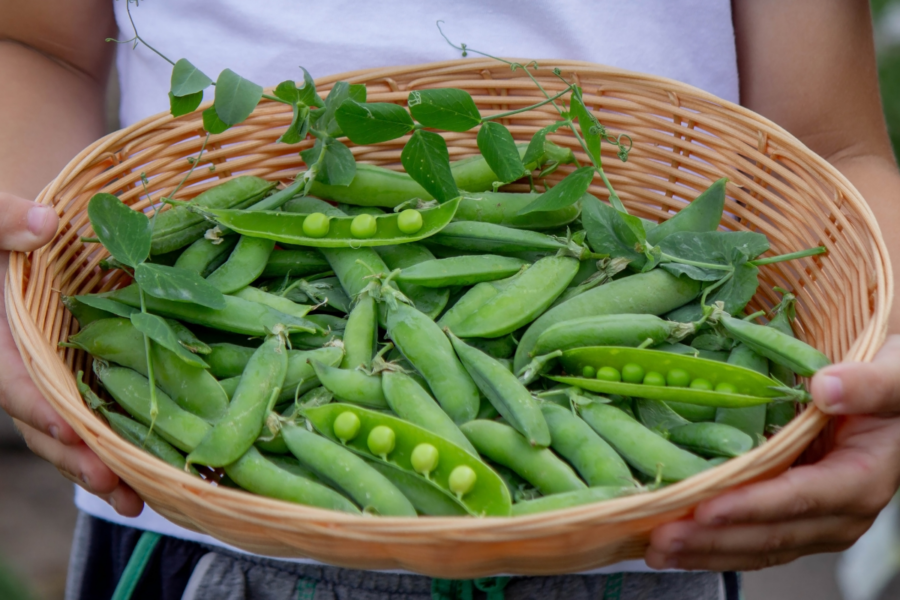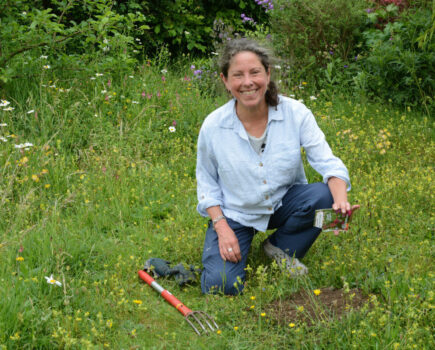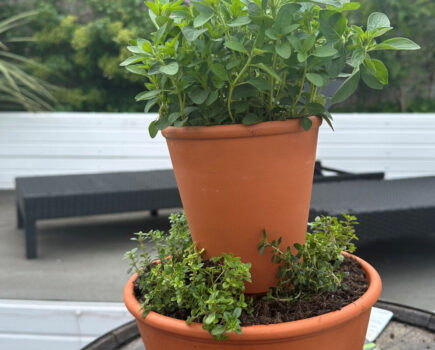Peas are out of fashion but so easy to grow
During a talk I’ll often ask for a show of hands of who grows this or that and cannot help notice how nowadays few folk have their own peas. Admittedly these plants are a little labour intensive and frozen peas are remarkably good, but fresh is always best. It’s the same with asparagus, sweetcorn and globe artichokes… until you’ve had these really fresh you just don’t know how delicious they should be.
Peas have been home-grown since antiquity and like field beans were consumed in the past as dried rations for winter and seldom, if ever, eaten fresh. With millennia of selection, the original wild grey peas became whitish green, by the 16th century an increasing sweetness meant new popularity, and by the end of the 17th century ‘snacking’ on hot fresh green peas had become a notorious indulgence of the rich. Apparently a ban on ladies eating them during church services soon had everyone wanting peas.

Pea varieties have vastly improved
The number of varieties, shorter, taller, earlier and late, multiplied from a half dozen to 150 by the time of Victorian gardeners. We are lucky, because all this breeding has made garden peas a most reliable and productive crop and as an added bonus, most are now conveniently short, reaching the knee or waist and needing only easy support, unlike the much more vigorous climbers of the past. Another big advance is resistance to mildew so we can now sow batches from early spring right through into late summer.
The problem with peas podding
There is one ‘challenge’ however; fresh peas are just so delicious, but their podding is just so tedious. You might grow Mangetout or Sugar Snap varieties to eat instead, pods and all, but they’re still not as wonderful as fresh green peas. The solution; boil or preferably steam them whole, and eat after the manner of asparagus. You put the pod in your mouth then pull it through your teeth leaving the hot peas inside. It’s delicious, and perfect as a starter.
How to make it er, easy peasy
Next, you can reduce work when growing them. Don’t search out a barrow load of sticks to support a row of peas, use netting on a few good stakes. Ideally use wire netting, galvanised or plastic coated, not plastic,as it lasts longer and more importantly, plants prefer the secure hold that wire offers, and it’s quicker to put up and take down. Furthermore, because we’re no longer sowing to come up under a long wigwam of pea sticks, but under a piece of netting instead, we don’t need to excavate that wide flat drill to sow in.
Instead, just wiggle a slit trench along the base of the netting with a spade, water, sow the seeds next to each other along the slit, cover them over and firm the soil. If you save your own, you can even put whole dried pods end-to-end along the slit and firm them in – it works fine, honestly.
Rodents and birds will always try to have your seeds, then the seedlings, so take precautions, but that’s it until harvest time. Then watch your pea plants daily, and as they get close to ripening, test a pod and as soon as they’re ready pick, cook, eat and enjoy. Easy peasy!
Find more tips, advice and articles like this at the Amateur Gardening website. Subscribe to Amateur Gardening magazine now.





